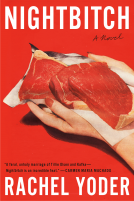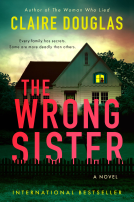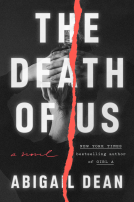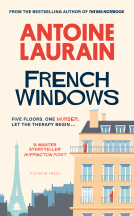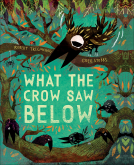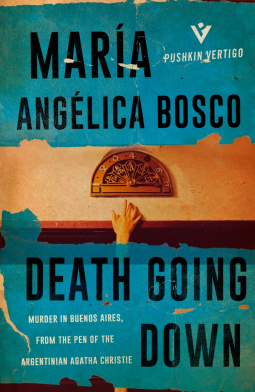
Death Going Down
by María Angélica Bosco
This title was previously available on NetGalley and is now archived.
Send NetGalley books directly to your Kindle or Kindle app
1
To read on a Kindle or Kindle app, please add kindle@netgalley.com as an approved email address to receive files in your Amazon account. Click here for step-by-step instructions.
2
Also find your Kindle email address within your Amazon account, and enter it here.
Pub Date Feb 21 2017 | Archive Date Nov 10 2016
Pushkin Press | Pushkin Vertigo
Description
In the early hours of the morning, a woman is found in the elevator of a plush apartment block on Santa Fe Road, Buenos Aires. She's young, gorgeous—and dead.
It looks like suicide, and yet none of the building’s residents can be trusted; the man who discovered her is a womanizing drunk; her husband is behaving strangely; and upstairs, a photographer and his sister appear to be hiding something sinister. When Inspector Ericourt and his colleague Blasi are set on the trail of some missing photographs, a disturbing secret past begins to unravel.
Set during the aftermath of World War II, when many immigrants left Europe for Argentina—some of them with dark pasts to hide—Death Going Down contains all the ingredients of a classic detective novel.
Advance Praise
"One of the best Argentinean detective novels of the twentieth century" MDZ Magazine
Available Editions
| EDITION | Other Format |
| ISBN | 9781782272236 |
| PRICE | $13.95 (USD) |
| PAGES | 160 |
Featured Reviews
 Elaine T, Reviewer
Elaine T, Reviewer
I would like to thank Netgalley and Pushkin Vertigo for an advance copy of Death Going Down, the fairly short investigation into the death of Frida Eidinger, found dead in an apartment block lift in Buenos Aires.
A female body is discovered in an apartment block's lift. She is not a resident and only one resident admits to knowing her although he denies she was visiting him that evening. As Inspector Ericourt and his secretary, Blazi start to enquire into Frida's life they uncover many secrets and still have no idea if it was suicide or murder but another body steers them towards murder.
Death Going Down is an old fashioned murder mystery with limited suspects and an ingenious method of killing. As befits the era, the novel was first published in 1955, the emphasis is all on the plot with little character development. I don't think this is a bad thing as it makes for interesting reading.
Ms Bosco, a new author to me, is apparently regarded as the Argentinian Agatha Christie and quite rightly so as this novel, her debut, had me baffled. I picked the wrong perpetrator and had no idea of method or motive. I stopped trying to guess when my brain started hurting.
If you want a short, engrossing puzzle Death Going Down fits the bill nicely and I have no hesitation in recommending it as a good read.
A classic whodunit written in Argentina in 1954 that reads like a time capsule. Not just because all the characters smoke like chimneys, but also with regards to gender politics. Some of the statements that the characters (male and female) make about women are shockingly old-fashioned (I can't believe this was written by a woman). After you get over this, the story is delightfully old-school, with a shout out to the Gaston Leroux classic The Mystery of the Yellow Room. It is also eye-opening as to the story of Argentina. I guess all I know about this country is what I learned from the musical Evita (I know, I should be ashamed of myself) so it is shocking to see how the geographically far away World War II affected them so much. The effects of this debacle affect this story. The detectives are a little one-dimensional compared to the new generations of investigators that we are used to reading these days, but they are still likable (especially Biasi and his canine companion, Muck). I really enjoyed the final resolution, with the detectives reuniting all the suspects and making them confess. It is a short and easy novel, and fans of whodunits must read it.
 Reviewer 197670
Reviewer 197670
[book:Death Going Down|29496170] is a classic murder mystery, first published in Argentina in the 1950s.
A woman is found dead in the lift of a building in Buenos Aires. Suicide? Murder? What happened? Why did it happen? Who was involved?
I was really impressed by this novel. It is only 160 pages long and yet, in it one encounters lovely prose, strong sense of place, good characterisation and an intricate plot.
Highly recommended!
(Many thanks to NetGalley and the publisher for the ARC.)
 Richard L, Reviewer
Richard L, Reviewer
María Angélica Bosco died in 2006; Death Going Down was her first novel, and won the Emecé Novel Award in 1954. It is a shame that I have only just become aware of her work.
Was she the Queen of crime in Argentina at this time? Well maybe, there is murder/suicide with poison. A denouement and a final re-enactment where the detectives are looking for anyone to give themselves away as the truth alludes them or the evidence isn't conclusive.
For this type of detective fiction to work you need a closed location, a limited number of suspects with things to hide and an unwilliness to talk to the police.
Set just 10 years after the end of WWII a number of individuals have resettled in Argentina to escape the horrors of Europe and build a new life. Imagine if across the world you meet someone who knows your past; it secrets and yours lies.
Motives galore, but no-one appears to have both sufficient motive and opportunity.
The key message of this book appears to be dependence in its many forms and restrictions; not being able to move nor being prepared to allow others to change. But is really really enough to kill or was it really just a suicide?
It was really a great experience to read an old fashioned crime novel set in another country, oozing rich language and intelligently written.
Unlike some books developing at this time this book keeps it focus on the crime and the background of the participants. It isn't, nor perhaps could it be a sociopolitical novel as Argentina was a very different country to say Sweden in the mid-fifties. This doesn't distract from this reading experience as it is insightful in terms of policing and underscores the frailties of human nature where people are 'normal' but remain capable of murder.
“That’s what happens to people who go out at night. Just look how they end up.”
I’ve posted previously on the crime books from Pushkin Vertigo. So far there have been some marvelous reads for crime fans: She Who Was No More, Vertigo, The Disappearance of Signora Chiara and several Frédéric Dard titles (all highly recommended by the way). Vertigo has also released a number of a number of novels from Augusto de Angelis–all much more standard police procedurals. Given the rather dramatic division between the book types (makes me think of Simeon’s Romans Durs vs. his Maigret novels), I’ve formed two figurative piles of books with the Augusto de Angelis on the left and all the other Vertigo titles on the right. That brings me to Death Going Down (original title: La Muerte Baja en Ascensor) from María Angélica Bosco–a police procedural that I’m going to place in the left stack with the Augusto de Angelis novels. However, I’ll add a caveat to that decision later.
Death Going Down opens on a cold night in Buenos Aires as Pancho Soler arrives home drunk to his apartment house. It’s an atmospheric scene as Soler stumbles from his car into the lobby of the building. He has just three minutes of light in the lobby (a regulation we’re told) and he makes it to the lift but sees it’s already in use.
All of a sudden he noticed that the lift shaft had filled with light and at the same moment, as if choreographed, the lobby plunged into darkness.
Someone had come down in the lift. He could make out a blurry shape on the other side of the door. Still leaning on the wall, Pancho moved to one side to make way for the person in the lift but the door remained stubbornly closed. All he could see was the shadow puppet outline of a shape curled up in the corner.
I don’t think I’m giving anything away to say that Soler opens the door and discovers a dead blonde in the lift. The police arrive, the residents gather, and the investigation begins. …
Death Going Down, a prize-winning crime novel, was published in 1955, and the story’s emphasis is the duplicitous lives lead by those in the apartment house along with the idea that the investigation is clouded by the number of immigrants involved. These relative newcomers to Argentina from Europe have lives shrouded in mystery. Are they victims of the nazis fleeing for their lives or do they have pasts they wish to escape from? And herein lies my hesitation in placing Death Going Down in that figurative left pile of Vertigo titles. Yes it is a police procedural but the refugees & immigrants, flotsam and jetsam from WWII still bring the war to Argentina’s shores a decade later, and that’s a nice twist.
There’s a solid assortment of suspects: playboy Pancho Soler, Dr Adolfo Luchter, caretakers Andrés and his bitter wife, Aurora Torres (she hopes the murder victim is the resident she likes the least,) the invalid Señor Iñarra and his family, the abrasive Bulgarian (former resident of Germany) Czerbó and his long-suffering sister Rita, and of course, the murder victim’s husband who married his wife by proxy.
There are three police figures in the book: Inspector Ericourt, Superintendent Lahore, and detective Blasi (my favourite of the three). That’s rather a lot of policemen for a 160 page book, and the result was that I was unable to get a firm grasp on any of their characters–although Blasi is the strongest drawn of the three. Here’s his approach to crime:
What do you do when you’re standing in front of a painting? You adopt different positions until you get the best perspective.
These days a common complaint about crime books is that they are too fleshed out with extraneous detail. In Death Going Down, the opposite is true, and while I can’t give away spoilers, the plot would have benefitted from further explanation of the past connections between the characters.
Finally, the author made mention of what happened to the victim’s dog, and this was a nice little touch to the tale.
Review copy
Translated by Lucy Greaves
I am loving the genre of crime noir fiction at the moment - and this is no exception.
This time the setting is in Buenos Aires - Pancho Francesco Soler discovers the body of a murdered woman in an elevator. All the residents of the building have something to hide - after WWII, many immigrants made their way to Argentina - and many had skeletons in the closet.
The story is punchy, and not short on suspects, motives, secrets, red herrings and death.
Who is the victim and why was she killed - all is revealed in the final chapter as the pieces of this puzzle fall into place.
Further reading: Frederic Dard, Augusto de Angelis, Caimh McDonnell, Bradley Spinelli.
Readers who liked this book also liked:
Tomoka Shibasaki
General Fiction (Adult), Literary Fiction, Novellas & Short Stories
Sara T. Behrman
Children's Fiction, Outdoors & Nature, Parenting & Families
